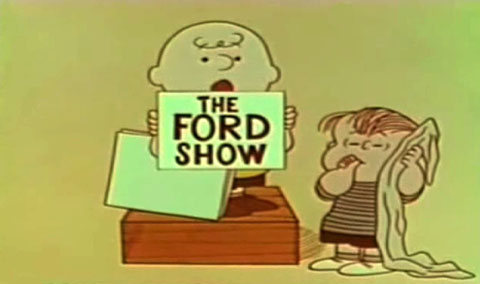

Cartoon Brew TV #6: Peanuts Ephemera
(Alternate commentary-free version: This link will allow you to watch the original cartoon without audio commentary)
You’re A Madman, Charlie Brown!
This week from the Cartoon Brew TV’s “Brew Vaults”, we offer several rare animated spots featuring Charles Schulz’s beloved Peanuts characters. We’re dedicating this episode to Peanuts animation director Bill Melendez, who passed away last month. First, the rarely seen theatrical trailer for the initial feature-length Peanuts movie, A Boy Named Charlie Brown (1969). This trailer was the first 16mm film I ever bought (at a New York Comic Con in the 1970s) and it led to a lifetime of collecting cartoons on film, so it holds great nostalgia for me. I actually saw A Boy Named Charlie Brown at Radio City Music Hall (it was the big Christmas attraction that year). I still recall how odd it was to see such simplistic animation on the huge Music Hall screen–a screen which usually played host to Disney’s latest fully-animated masterpieces. In retrospect, the film is one of the best pieces of Peanuts animation, comparable to the earliest Peanuts holiday specials. Schulz, as usual, wrote the screenplay and retained a smattering of the adult-skewing wit that had all but disappeared from the Peanuts TV shows produced at this time. Poet-Composer Rod McKuen wrote the four songs in the film, and they are pretty good. The movie was a huge hit, becoming the number one film the week it was released, and ultimately spawned three sequels.
Following the movie trailer, we dive into “Animated Peanuts B.C.B.C” (Before Charlie Brown Christmas). The first time the Peanuts crew were animated was to pitch the Ford Falcon compact car in commercials created for Ford Motor Company. Ford also sponsored The Ford Show (1957-1961) starring country entertainer Tennessee Ernie Ford. Playhouse Pictures, a commercial animation studio in Hollywood made up primarily of ex-UPA employees, was commissioned by the J. Walter Thompson ad agency to create a new Ford sponsored animated opening each week for the Ford Show. In 1960-61 they decided to use the Peanuts characters in several of the actual show openings. Note that the first gag here uses Paul Frees as the voice of Charlie Brown! This is followed by a Ford car spot promoting the 1961 Falcon models. This commercial features my favorite Peanuts character, Pig-Pen. Unlike the later Charlie Brown TV specials and movies (and a bit like the old Dell Peanuts comic books), these Ford spots represent Peanuts with the least creative involvement by Schulz, who was known to write and draw almost all Peanuts material himself.
In a 1984 interview with the Museum of Broadcasting, Bill Melendez recalled his first encounters with Charles Schulz and Charlie Brown:
Well, I was doing Ford commercials at J. Walter Thompson when it was decided that Charlie Brown would be the spokesman for the Ford Falcon. I was told Charles Schulz was very shy and reticent about commercializing his strip. So I went to San Francisco and met Sparky and we hit it off. I told him what we did, and he nodded and said, “All right, we’ll try it.” He was very leery of getting involved with “Hollywood types” as he used to call us.
Of course he understands that his drawings are flat, two dimensional designs, and that, for example, the front view is very different from the side view. They are not three-dimensional characters. You can’t turn them around the way we used to turn the Walt Disney characters, who were designed to be round and three-dimensional. To animate Peanuts characters we have to be more inventive, because we tend not to be realistic. We don’t try to ape real live action as we did in animating Donald Duck and Mickey Mouse.
I imagine Sparky must have been curious about how we were going to do it, but he never gave us any kind of a hint or anything at all about what he wanted. So we showed him how we thought it should move, how we thought they should turn, how we thought they should walk and he accepted everything. From then on we hit it off pretty well.
Thanks to Michael Geisler and Stu Shostack for recording the audio track, and Randall Kaplan for his expert sound and picture editing.
